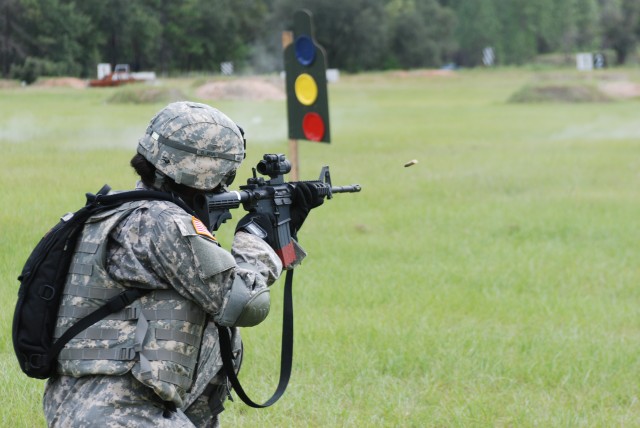<B>FORT STEWART, Ga. -- Before any unit deploys to a foreign nation, it must prepare for the challenges that lie ahead.
The Army, which understands such a daunting task, has set up specific people, places and units to carry out the tasks that must be completed prior to deployment.
At Fort Stewart, the job of making sure that each brigade meets the requirements for mobilization falls on the shoulders of the Mobilization Branch of the Directorate of Plans, Training, Mobilization and Security.
"We are the tip of the spear for mobilization," said Roy K. Lintz, Chief of the Mobilization Branch at Stewart.
Each requirement helps Soldiers prepare for their upcoming deployment. It also ensures that their Families are taken care of while they are away.
"There are 12 validation requirements," Lintz said. "We ensure that all validation requirements are met and that Soldiers are ready."
Training, medical status, finance and dental status are only a few of the validation requirements. To make certain that each of the validation requirements are met takes months of preparation and planning.
"There is a series of things that [Soldiers] go through," Lintz said. "They are on ground for a short period of time. About 60 days is what we have to do this before they go forward in theater."
Mobilization is a U.S. Army Forces Command mission. FORSCOM delegated the task to 1st Army, who manages it and decides what brigade mobilizes at what mobilization station. The Mobilization Branch's main job is to coordinate with the 3rd Infantry Division, Fort Stewart Garrison staff, the 188th Infantry Brigade, the trainers, 1st Army, and the incoming mobilizing unit to ensure that operations run smoothly during the process.
The Mobilization Branch has laid the groundwork to receive the 41st Infantry Brigade Combat Team of the Oregon National Guard, which is scheduled to deploy late this year. There are many challenges facing training this unit with the 3rd ID still on ground, but the biggest concern is safety.
"Because the training areas will be condensed, we are placing a high emphasis on training and risk assessment," said Lintz.
Fort Stewart's 284,000 acres provide Soldiers and units unequaled training opportunities.A,A There are three airfields that could support deployments, access to three major sea ports, rail heads, and good road routes, making Fort Stewart the largest installation east of the Mississippi River.A,A
There is a tremendous amount of synchronization involved in readying units for mobilization, and units must start coordinating nearly six months prior to their mobilization.
"When a unit comes in, they are broken down by [unit identification codes], Lintz said. "We have teams, and each team is assigned a series of UICs. They track those UICs from cradle to grave, from the time they hit the ground to the time they depart to the theater of operations."
The Mobilization Branch tracks many Soldiers and as the years have passed, the volume of Soldiers has increased.
"Before 9/11, we, as an installation, only moved 75 Soldiers on an annual basis. That's it," said Lintz. "After 9/11, we've been doing, on average, two brigades. That includes mobilizing and demobilizing. We mobilize 7,000 - 8,000 Soldiers on an annual basis."
Since 9/11, Fort Stewart has mobilized more than 443 Reserve component units - approximately 26,000 Soldiers.
"Our job is to set these Soldiers up for success," said Lintz. "Once they hit the battlefield, we have provided them all the tools they need so they can stay focused on their mission."


Social Sharing